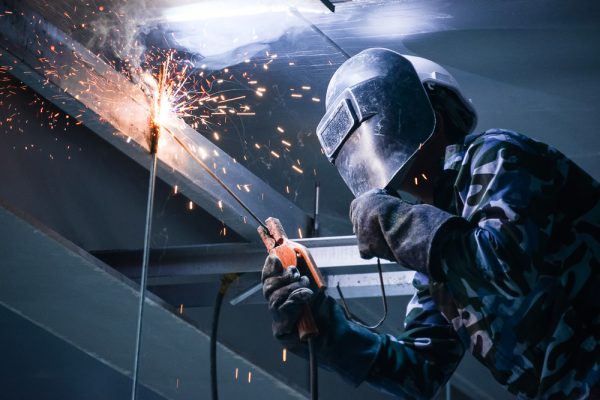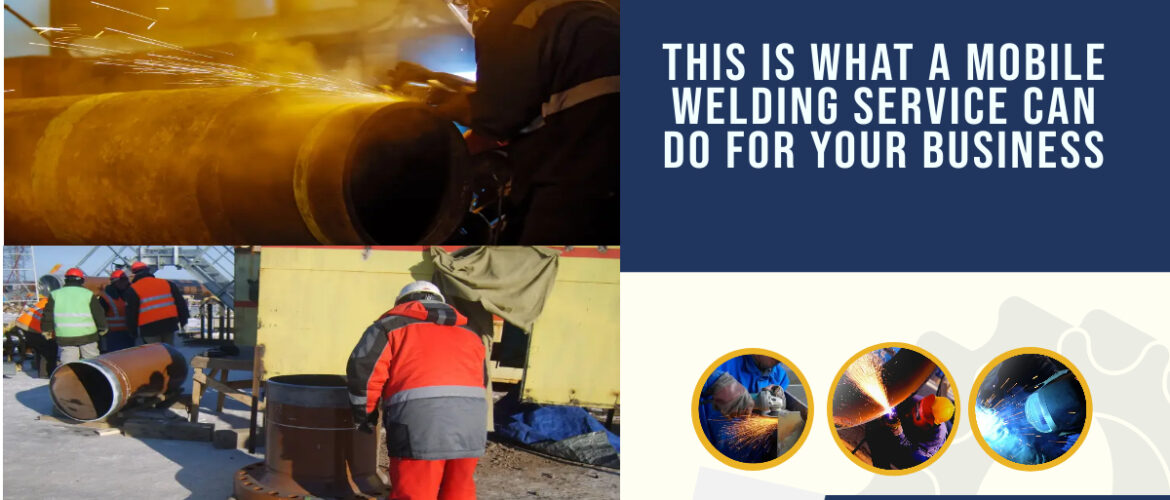Unlocking the Key Kinds Of Welding Providers for Your Projects
In today's landscape of diverse welding services, understanding the nuances and applications of different welding techniques is critical for effective project implementation - Welding Inspection Service. By untangling the essential types of welding solutions readily available, one can browse the complexities of selecting the most ideal method to make certain accuracy, performance, and quality in welding jobs.
Typical Welding Techniques
A number of commonly utilized welding methods play critical duties in numerous commercial sectors. One of the most widely used approaches is Gas Metal Arc Welding (GMAW), likewise known as MIG welding.
An additional preferred welding strategy is Gas Tungsten Arc Welding (GTAW), frequently described as TIG welding. TIG welding makes use of a non-consumable tungsten electrode to create the weld and requires a separate filler material. This technique is favored for its control, ability, and accuracy to generate top quality welds on thin materials.
Shielded Steel Arc Welding (SMAW), or stick welding, is one more essential approach where a flux-coated electrode is used to produce the weld. SMAW is recognized for its simpleness, flexibility, and viability for exterior and on-site welding applications. These common welding methods are crucial for fabricating frameworks, machinery, and numerous equipment throughout sectors.
Advanced Welding Processes
Advanced welding processes include innovative strategies that press the boundaries of typical welding methods in terms of accuracy, convenience, and efficiency. One such procedure is laser light beam welding, which utilizes a focused light beam of light to sign up with metals with minimal heat-affected zones, making it ideal for high-precision or fragile projects. Additionally, electron beam welding uses a high-velocity electron beam of light to develop deep welds in thick products, providing outstanding toughness and quality.
Moreover, friction mix welding is a solid-state joining process that uses a rotating tool to produce frictional warm, bonding materials without melting them. This approach is especially helpful for signing up with light-weight alloys with premium mechanical residential or commercial properties. Another innovative strategy is ultrasonic welding, where high-frequency ultrasonic vibrations are made use of to develop solid-state welds in plastics, metals, and various other materials, supplying tidy and quick joining remedies.
These progressed welding processes deal with a varied series of industrial demands, supplying effective, high-quality, and exact services for numerous projects, from aerospace parts to automotive parts and past.
Specialized Welding Applications

Automated Welding Solutions
In contemporary commercial settings, the execution of automated click here for more welding remedies has actually transformed production processes by boosting efficiency and accuracy. Automated welding systems make use of advanced innovations such as robotics, computer system mathematical control (CNC), and synthetic knowledge to execute welding jobs with minimal human treatment (Welding Inspection Service). These systems use countless advantages, including enhanced efficiency, improved weld quality, and lowered manufacturing expenses
One key benefit of automated welding options is their capacity to continually produce high-grade welds, leading to improved general item top quality. Furthermore, these systems can run continuously, 24/7, without the need for breaks, resulting in higher outcome levels and faster project conclusion times. By making use of automated welding options, business can likewise reduce the dangers connected with human mistake, making certain greater precision and repeatability in the welding procedure.
Furthermore, automated welding options are highly versatile and adaptable to various welding applications, from detailed parts to large-scale frameworks. Whether in automobile production, aerospace markets, or building projects, the assimilation of automated welding systems supplies a competitive edge by streamlining operations and providing superior welding results.
Innovative Welding Technologies
The advancement of automated welding remedies has led the way for the combination and development of ingenious welding technologies in modern industrial applications. One such innovative modern technology is laser light beam welding, which uses a highly focused beam of light of light to join metal components with precision and performance. This method is particularly valuable for tasks calling for elaborate welds on products with high melting factors or for applications where minimal heat-affected areas are vital.
One more innovative welding modern technology getting appeal is friction stir welding (FSW), a solid-state signing up with process that creates high-strength bonds by creating frictional warm in between two items of steel. FSW is commonly used in industries such as aerospace and auto for its ability to generate welds with superior mechanical residential properties and boosted architectural honesty.
In addition, electron light beam welding my response (EBW) is an innovative strategy that uses a beam of high-velocity electrons to create exact, deep welds in metal components. This technology is preferred for its capacity to bond different steels and products with varying thicknesses effectively. As sectors remain to require higher top quality and look at more info effectiveness in welding procedures, these cutting-edge modern technologies are poised to play a considerable function fit the future of industrial welding applications.

Verdict
Finally, understanding the essential kinds of welding services is vital for efficiently completing a selection of tasks. From common welding methods to innovative processes, specialized applications, automated solutions, and ingenious modern technologies, each approach uses unique benefits and applications. By familiarizing yourself with these different welding alternatives, you can choose the most ideal strategy for your specific project requirements and attain high-quality outcomes.
In today's landscape of diverse welding solutions, recognizing the nuances and applications of different welding strategies is vital for effective job execution. By unwinding the vital kinds of welding services available, one can browse the complexities of selecting the most suitable strategy to ensure accuracy, efficiency, and quality in welding projects. As we begin on this exploration of welding services, a deeper understanding into the world of welding waits for, promising insights that can boost the end results of your tasks.
